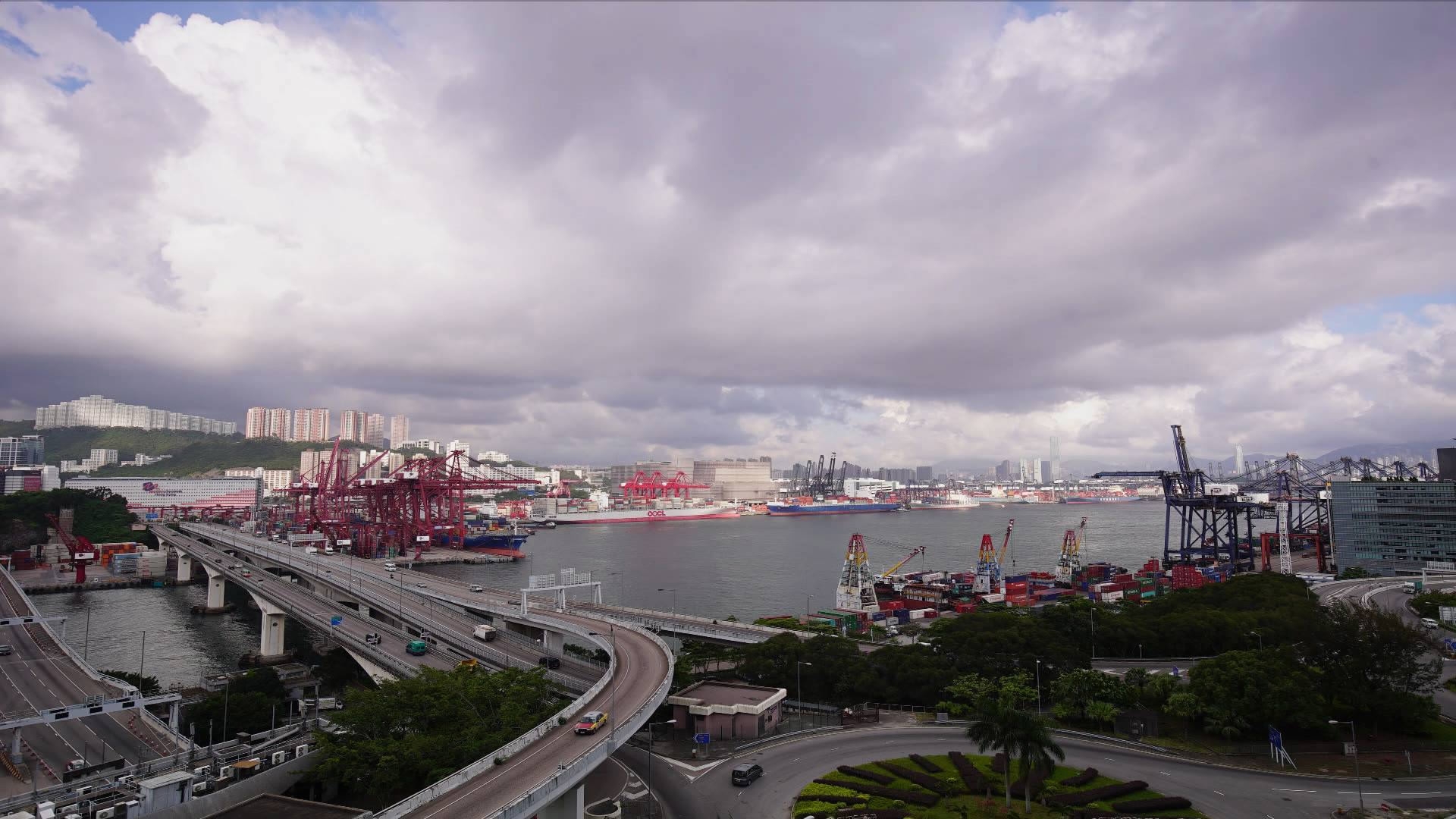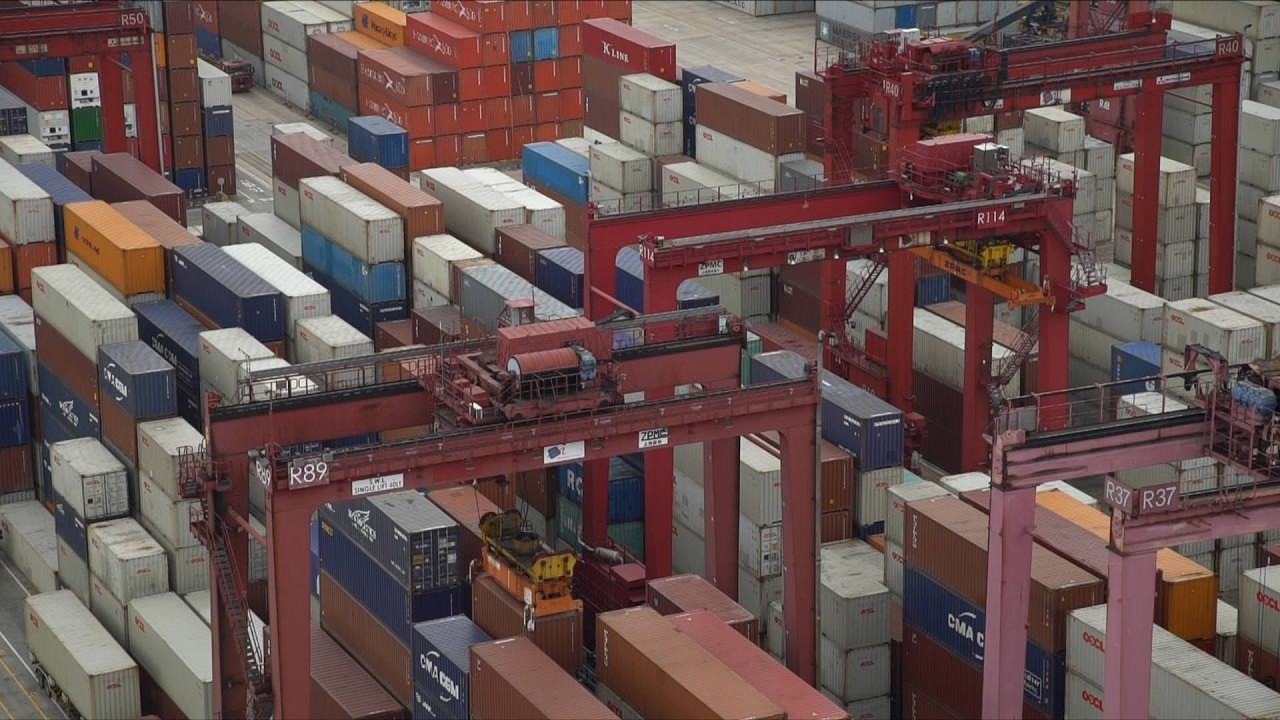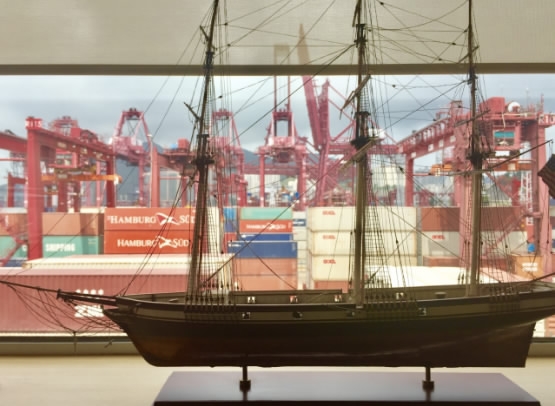

By CGTN’s Laura Schmitt, Fan Lu
When the British established themselves in Hong Kong in 1842, the city was a sleepy fishing village of around 7,000 people. Today, there are over seven million residents, making Hong Kong one the most densely populated cities in the world. It remains closely connected to the sea, and its strategic location pushed the city to grow rapidly over the 20th century to become the busiest port worldwide by the year 2000.
Most of Hong Kong’s shipping happens at the port of Kwai Tsing, which has been operational since 1972. Around 190,000 people work there, making up over five percent of Hong Kong's workforce.
Modern Terminals is the port’s second largest operator, and the oldest one which had the first purpose-built container-handling facility in 1972. It is a feat of human logistics and one of the most efficient ports in the world.

A view of port in Hong Kong. /CGTN Photo
Around 240 ships a month, and approximately five million containers a year are handled here. That’s about ten containers every minute.
Containers at the port are stacked to a breath-taking height of up to seven stories, as space is in rare supply. Shipping dates need to be considered during the stacking process. You wouldn’t want to see a container that meant to be transported this minute is at 15 meters away.
Hong Kong's iconic red cranes are controlled by equipment operators who pile up the containers. Their "offices" are located in glass cabins that dangle at a height of around 45 meters above the ground. Weather conditions are essential at this point, because containers can swing because of winds. Operations are active 24/7 (24 hours a day for seven days a week), unless services are suspended due to storms and typhoons.
Is Hong Kong's ports a never-ending success?

Ports of Hong Kong ranked in the top 3 busiest ports worldwide until 2012. /CGTN Photo

Copyright © 2018 CGTN. Beijing ICP prepared NO.16065310-3
Copyright © 2018 CGTN. Beijing ICP prepared NO.16065310-3